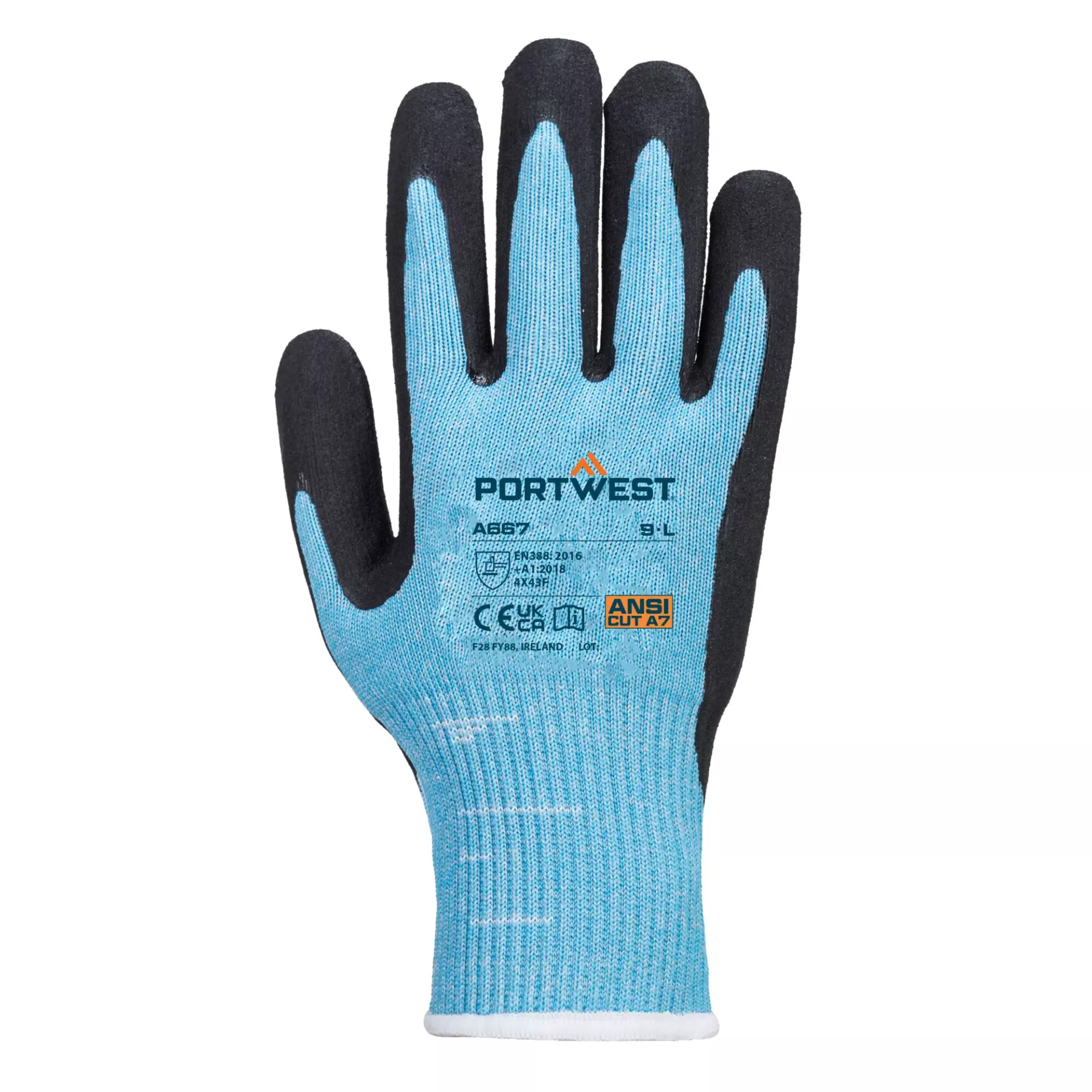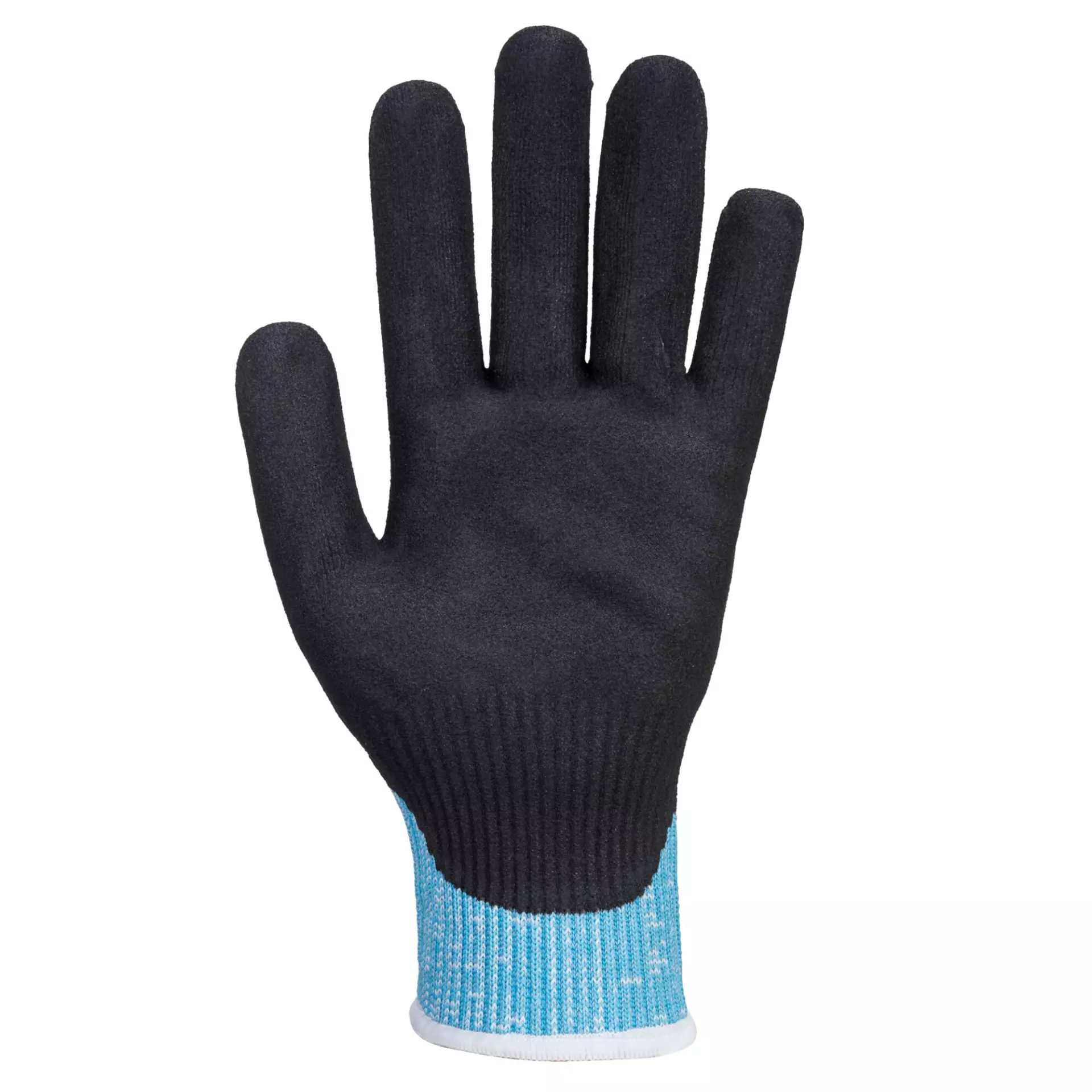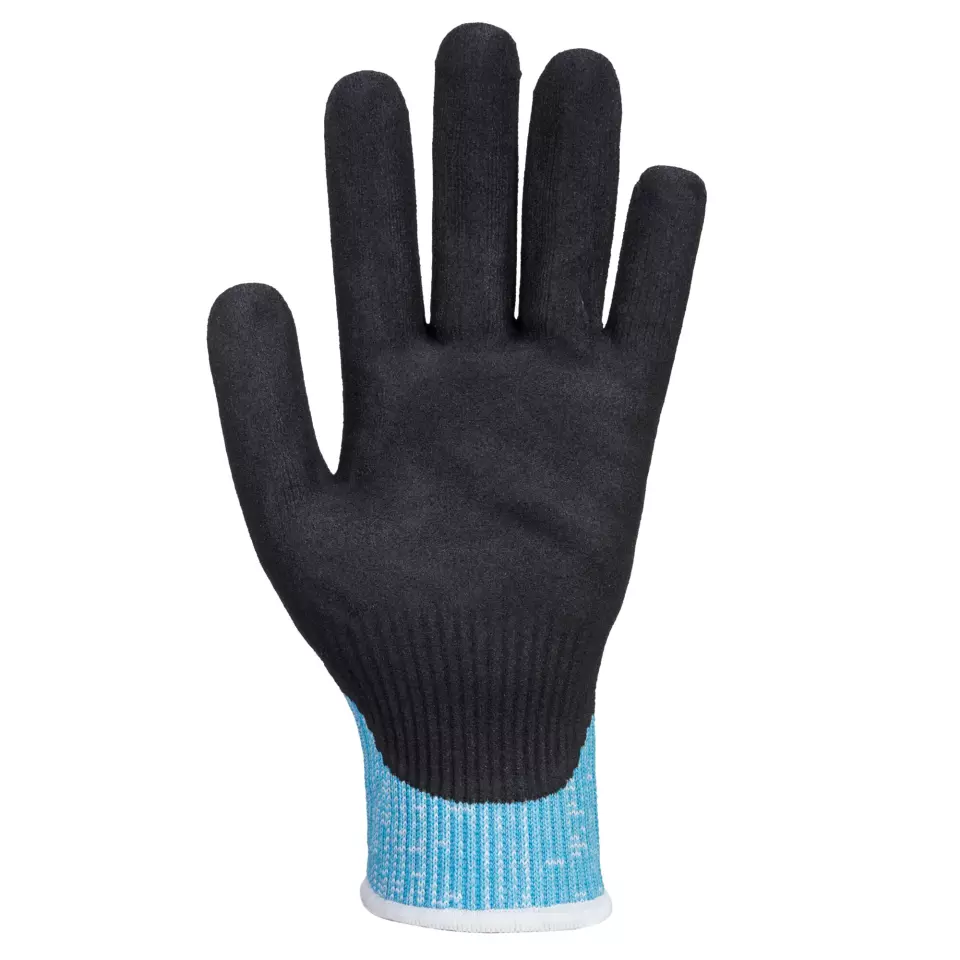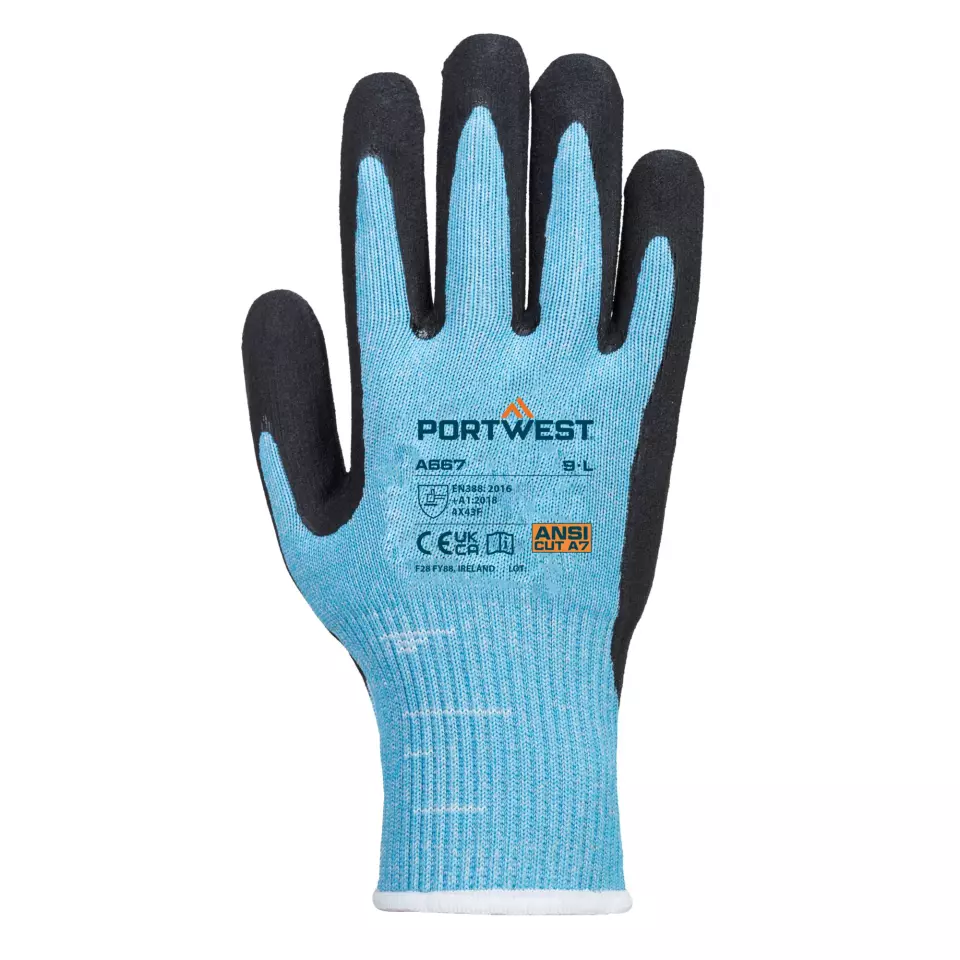


Features You'll Love

Coating Material · Nitrile
The substance applied to glove surfaces to enhance grip, durability, and protection, with different materials suited for various work conditions.

EN 388 · Abrasion Resistance Level 4, Cut Resistance, ISO 13997 Level F, Tear Resistance Level 4, Puncture Resistance Level 3
Offers the highest level of protection against intense rubbing and wear from rough materials.
Provides the highest certified protection against cuts from straight blades under extreme force.
Offers the highest level of protection against tearing, withstanding a strong force before ripping.
Withstands strong pressure from sharp objects like nails or thick splinters.
Portwest
Claymore Cut F13 Nitrile Glove, Blue/Black, 12 pairs
Claymore Cut F13 Nitrile Glove, Blue/Black, 12 pairs
4.6 / 5
143,31 €
Price per 12 pairs
11,94 € / pair
Choose size
Out of stock
Free delivery
Features You'll Love

Coating Material · Nitrile
The substance applied to glove surfaces to enhance grip, durability, and protection, with different materials suited for various work conditions.

EN 388 · Abrasion Resistance Level 4, Cut Resistance, ISO 13997 Level F, Tear Resistance Level 4, Puncture Resistance Level 3
Offers the highest level of protection against intense rubbing and wear from rough materials.
Provides the highest certified protection against cuts from straight blades under extreme force.
Offers the highest level of protection against tearing, withstanding a strong force before ripping.
Withstands strong pressure from sharp objects like nails or thick splinters.
Product description
High-performance cut-resistant nitrile glove engineered for maximum protection in demanding work environments. Features Level F cut resistance with over 5000 grams of cut resistance, achieving ANSI Cut A8 rating according to EN388:2016 standards. The double sandy nitrile coating provides excellent durability and grip in both wet and dry conditions, while the seamless 13-gauge liner ensures comfort and breathability during extended wear.
Product Features:
- Level F cut resistance with over 5000 grams of cut resistance
- Double sandy nitrile coating for excellent durability and grip in wet and dry conditions
- Seamless 13 gauge liner for increased wearer comfort
- Breathable seamless liner design
- Optimised innovative design for tough work environments
Technical Details:
- EN ISO 21420: 2020 Dexterity 5
- EN 388: 2016 + A1: 2018 (4X43F)
- ANSI/ISEA 105: 2016 CUT Level (A8)
- ANSI/ISEA 105: 2016 ABRASION Level (6)
Standards:
- Maximum cut resistance according to EN388:2016
- ANSI Cut A8 certification
- OEKO-TEX® STANDARD 100 approved
- CE certified
- UKCA marked